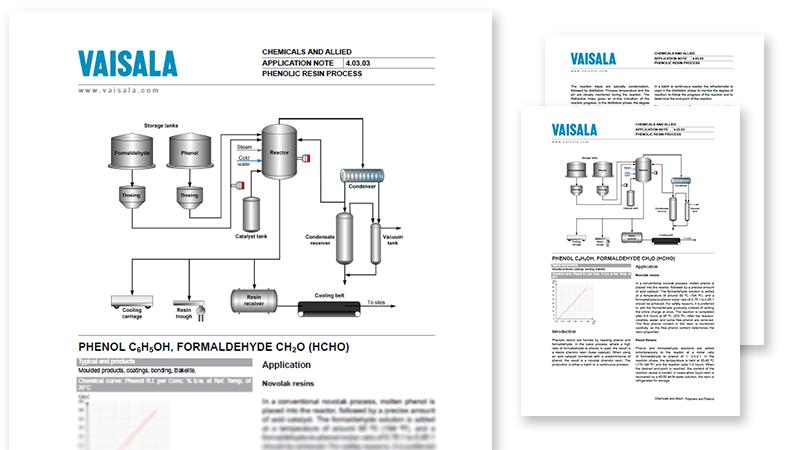Application note
Phenolic Resin Process
Process control in phenolic resins production
Phenolic resins are received from the reaction of phenol and formaldehyde.
Resole phenolic resin is formed from high ratio of formaldehyde to phenol. While, novolak phenolic resin is obtained by combining acid catalyst with predominance of phenol.
Novolak resins
In a conventional novolak process, molten phenol is placed into the reactor, followed by a precise amount of acid catalyst. The reaction of the formadehyde to phenol goes under specified temperature and time conditions, and the final phenol content in the resin is monitored carefully, as the free phenol content determines the resin properties.
Resol resins
In resol resin process, phenol and formaldehyde solutions are added simultaneously at a specified ratio. After the reaction, once the desired end-point is reached, the content of the reaction vessel is cooled and refrigerated for storage.
Vaisala Polaris™ Process Refractometer gives an in-line indication of the reaction progress typically involving condensation, followed by distillation. In both applications, the continuous measurement offers valuable real-time information for process control by monitoring the degree of reaction, following the progress of the reaction and determining the end-point of the reaction.
Learn the details of the phenolic resins production process from the application note.
Download the application note in PDF by filling the form.
Go back to all Chemicals & Allied Products applications

You can modify your preference settings or unsubscribe at any time here